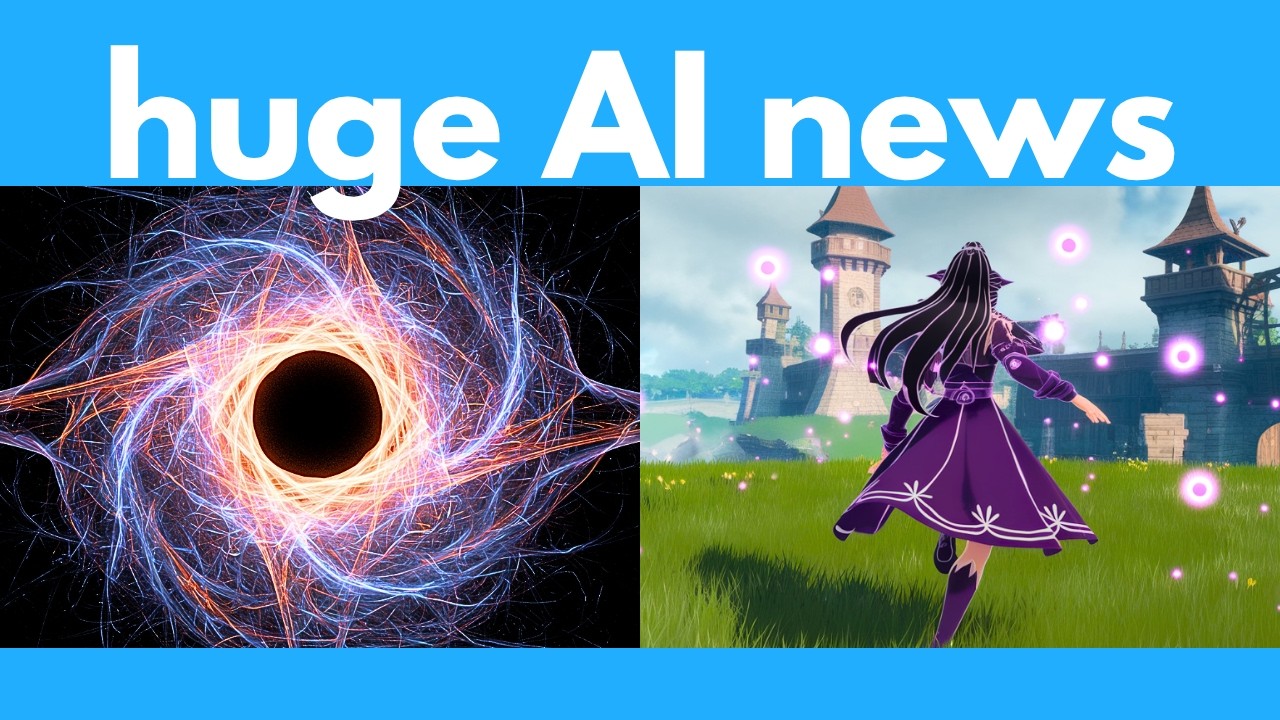This week in AI saw major advancements including OpenAI’s release of open-source large language models GPT OSS 120B and 20B, Alibaba’s ultra-fast Fast Juan video generator, Google’s interactive learning tools and real-time 3D world generator Genie 3, and new compact image generation models like Uni Pickic. Additionally, Anthropic launched Claude Opus 4.1 optimized for coding, though it trails behind top competitors, collectively marking significant progress in AI capabilities across language, video, image, and interactive 3D environments.
This week in AI has been packed with major developments, starting with OpenAI’s release of two open-source large language models, GPT OSS 120B and GPT OSS 20B. These mixture-of-experts models offer strong reasoning capabilities and tool use, with the larger model requiring high-end GPUs like the H100, while the smaller one can run on consumer-grade hardware. Despite impressive self-reported benchmarks close to proprietary models like GPT-3.5 and GPT-4, independent evaluations place these open-source models lower in performance compared to competitors such as GPT-4 and Gemini 2.5. Nonetheless, their cost-effectiveness and Apache 2 licensing make them attractive for commercial and experimental use.
In video generation, a new fine-tuned model called Fast Juan significantly accelerates Alibaba’s open-source video generator, enabling near real-time video creation even on consumer GPUs like the RTX 4090. Fast Juan reduces the number of generation steps drastically, producing 5-second 480p videos in seconds with minimal quality loss. This advancement opens up possibilities for faster, more accessible AI video generation, with the model and demo already available for public use. Meanwhile, Google Gemini introduced a guided learning feature acting as a virtual tutor, helping users learn topics step-by-step with interactive questioning, alongside a free AI-powered storybook creator that generates personalized illustrated stories with narration, ideal for children.
Google DeepMind also unveiled Genie 3, a groundbreaking real-time interactive 3D world generator capable of creating detailed environments and characters from text prompts or images. This model supports real-time exploration and interaction at 720p and 24fps, with impressive physical simulations like water and wind effects. Although still limited in resolution, action complexity, and continuous interaction time, Genie 3 represents a major leap toward AI-generated dynamic video game worlds and virtual environments. Access remains restricted to select researchers, but the technology hints at future applications in gaming and mapping.
On the image generation front, several new models emerged, including Skywork’s Uni Pickic, a compact 1.5 billion parameter autoregressive model inspired by GPT-4’s architecture. Despite its small size, Uni Pickic delivers strong semantic understanding and image editing capabilities comparable to much larger models, making it suitable for running on modest GPUs. Other notable image generators like Flux Create Dev and Quen Image also debuted, offering realistic photo generation and advanced text rendering in images, respectively, expanding the toolkit for creators and developers.
Lastly, Anthropic released Claude Opus 4.1, their latest AI model optimized for coding tasks, showing marginal improvements over its predecessor but lagging behind competitors like GPT-5 and GPT-4 in broader benchmarks such as science and math. Demonstrations revealed that while Claude Opus 4.1 can generate functional dashboards, it struggles with more complex interactive applications like a Photoshop clone, where GPT-5 excelled. Independent leaderboards reflect these mixed results, positioning Claude as a solid but not leading choice for general AI tasks. Overall, this week’s AI news highlights rapid progress across open-source models, video and image generation, interactive learning, and 3D world creation, signaling exciting directions for the field.
